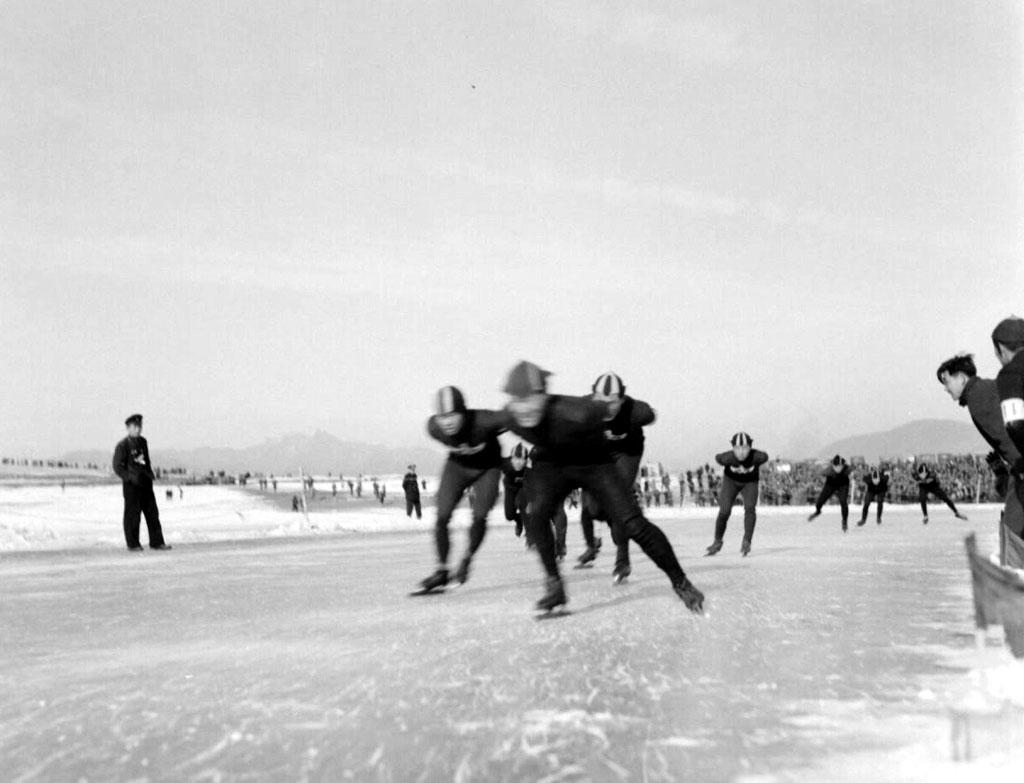Frozen in time: Han River's lost era as heart of winter sports
Did you know that the river could once be crossed on foot during the winter?
By Lee Sun-youngPublished : Feb. 6, 2024 - 18:15

For those who have visited Han River, taken one of its cruises or simply marveled at the vast waters flowing through parts of Seoul’s ultramodern cityscape, it might be difficult to picture that just half a century ago, it used to be the epicenter of winter sports in South Korea.
In the 1960s, '70s and earlier, winter would transform the Han into a frozen expanse crossable on foot or via cow-pulled carts, also creating a playground for children to sled and skate and nurturing a seasonal ice harvesting industry, as refrigerators were not yet widespread.

Hence, the public would anticipate the arrival of the cold of winter, as shown in a Dong-A Ilbo newspaper article dated Jan. 5, 1959.
"Due to the continuing cold wave, the Han River has finally started to freeze. By this morning, a thin layer of ice had formed. If the cold persists for another 2-3 days, we can anticipate it to freeze completely, thick enough to support skating," it reported.
The frozen Han also served as the venue for national skating competitions.
Archived photos from the National Archives of Korea show that in 1956, a national skating event took place in the middle of the Han, attracting large crowds of spectators, including President Syngman Rhee at the time.


According to the Korea Meteorological Administration, the Han would typically freeze for 77 days a year in the 1910s, when data began to be compiled. Over the following decades, however, there has been a noticeable decline in how long it freezes. By the 1960s, the duration was down to an average of 42.2 days, which then further shrank to 28.7 days in the '70s, 21 days in the '80s and 17.1 days in the '90s.
Since entering the 2000s, the river has been the way we know it today: freezing only for a few days, and in no way thick enough to allow anyone to cross it on foot.
Officially, the Han is declared frozen when ice is observed 100 meters upstream on the second and fourth piers of the Hangang Bridge, the official observation points for freezing.
This winter, the Korea Meteorological Administration reported its first observation of the Han's freezing on Jan. 26, which is 16 days later than usual and 32 days later than last winter.

Why exactly has there been such a drastic change to the Han’s freezing patterns? There is no comprehensive study available that pinpoints the exact reasons.
But experts from diverse areas generally agree that the change results from a combination of several factors, including: warmer winter temperatures, increased water flow and velocity after dams were constructed upstream, and the influx of warmer sewage water due to urbanization.
The average temperature in Seoul in 1908 was reported at minus 3.5 degrees Celsius, but in 2023 it was minus 1.5 degrees.
Kang Hye-mi, spokesperson for the weather agency, explains that nowadays the Han River freezes when the daily minimum temperature stays below minus 10 degrees Celsius for more than five days and the daily maximum temperature also remains below freezing.




















![[Today’s K-pop] Treasure to publish magazine for debut anniversary](http://res.heraldm.com/phpwas/restmb_idxmake.php?idx=642&simg=/content/image/2024/07/26/20240726050551_0.jpg&u=)